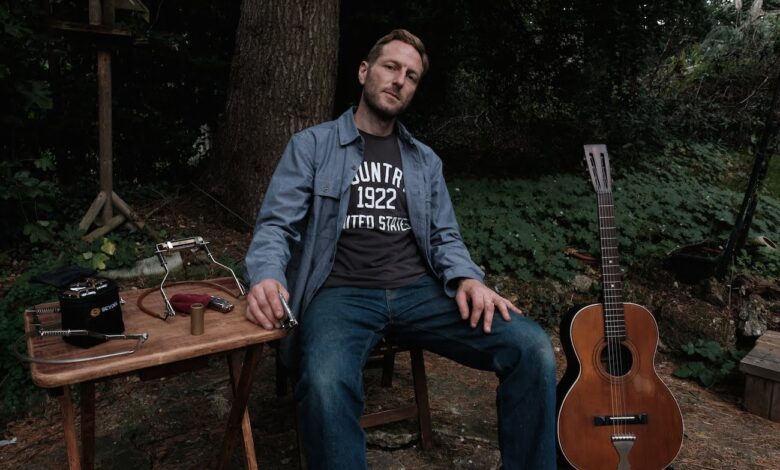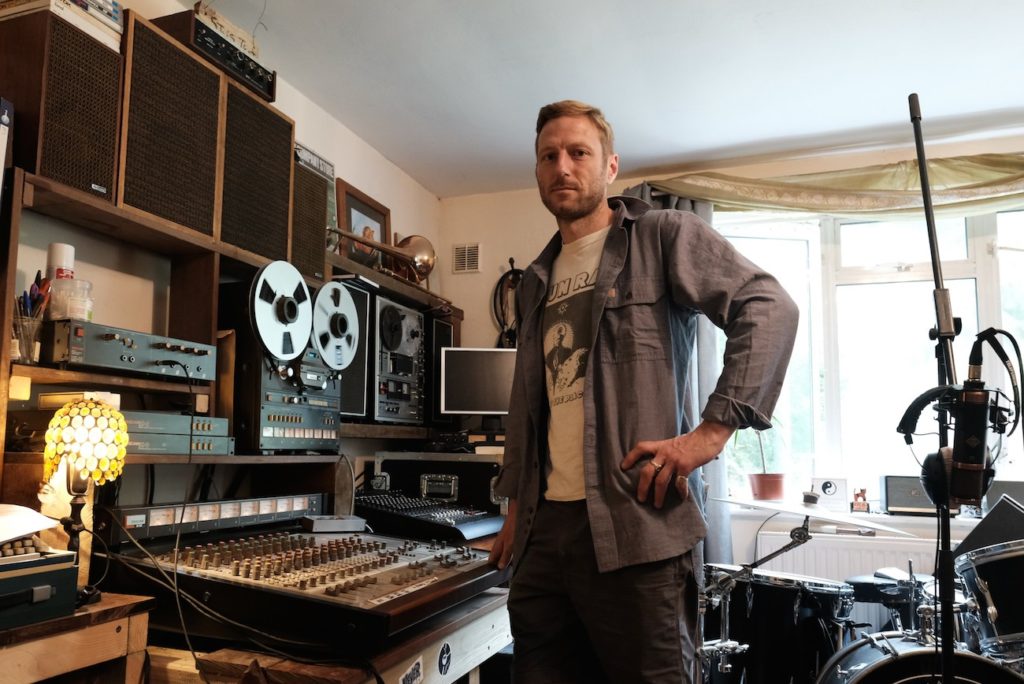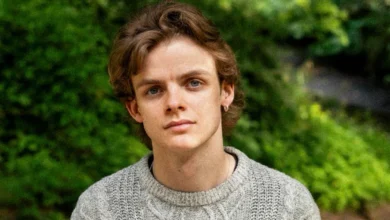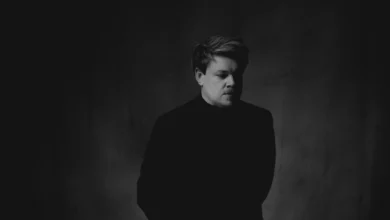
IN CONVERSATION – SJ DOWNES
Seb Klee caught up with SJ Downes to find out more about his new EP Lion’s Path and his creative process.
Liverpool Noise: The Lion’s Path EP sees your first official collaboration with Liverpool’s MellowTone Label.We know that your relationship goes back to 2007; so how come this took 13 years to happen?
SJ Downes: The simple answer to this is that I believe some things can’t be rushed , they just happen naturally when and if they are meant to when various elements come together in chance and circumstance or the right place at the right time. Yes, my relationship with Mellowtone started in 2007 when I moved to Liverpool, and really started to take root in 2008, in the City of Culture year, playing many events they put on in and around the city over the next few years.
I remember us talking about the idea of releasing recordings back around 2010 yet at that stage Mellowtone Records was still a strongly growing concept and for myself my vision was rooted in playing live so it didn’t materialise then. In 2011, I moved away to help family and time since has taken me off on different routes and adventures. In 2014 Mellowtone kindly asked to contribute a track to their own 10 years compilation and this helped our connection in between as a pivot to now.
LN: We know that the compositions were recorded in real time, which captures the feel of spontaneity, but the composing and recording processes are quite distinctive. Did you spend a lot of time in the composing stage, or was it more a stream of consciousness process?
SJD: With regard to each of the four tracks each composing stage was slightly different. 1) All My Life – This song was the most planned out of the four, even to the point that I charted out the arrangement. I never usually do this. The initial mood this was conceived as, was more buoyant that came out at 4mins 45 secs on timing. I recorded it the next day in a more grounded and centred mood and this paced it out longer at 6mins 39. As a song itself , it evolved from a guitar rhythm I’d been developing over the summer which is influenced by a Kora playing its rhythm base known as Silaba translating as ‘Long Road’. I’d tried a few accompaniments around this and the high ‘harp like’ guitar complimented this take well, reminiscent of mountain dulcimer or Washington Philips , a 20’s singer came to mind. It was also conceived as a vocal song but I was satisfied for the harmonica to then suggest the vocal line.
2)Death Blues – This was a pure reflection of the moment and mood I was in. I just pressed record and this was the second take run through I did, improving on the first after listening back to it. I initially added a second acoustic guitar but decided on the purer aspect of this. It just came together by retuning to a minor tuning then this came out which reflects figures that id heard by John Fahey and has in mind composers such as Ennio Morricone in some of his western soundtrack themes.
3) The Light Will Shine – As with Death Blues, this was unplanned and came from the mood of the moment. This was one of the strongest themes I played in the sense that it actually felt like the guitar was playing me rather than the other way around. It brings in influences in my playing like Ry Cooder but then links with themes he’s reflected in his work looking back into American history .To me it feels like some old Civil War thing, down in battle but not given up , determined that good will come. It’s a repeated verse played a number of times slightly altering the emphasis on each repeat as the mood builds.
4) The actual take captured of this is purely freestyle yet again it was around figures i’d been working on through the summer. There was no compositional planning here, more an on the fly improvising through a combination of parts. I like to approach music this way a lot of the time, it leaves room for unexpected stuff to happen, like the fireworks at the end of the piece which I didn’t expect and ended up playing the ending of the tune around. Its a certain combination of guitar/harp here. Open G slide ,playing 1st position harp in G. I originally conceived the guitar part in Standard tuning yet playing it this way gave me more room for improvisation and kind of made the music more personal. This was the last piece I recorded and made these choices in line with the other songs I was presenting.

LN: Keeping to a limited sonic palette can be both restricting and limiting. In this case, was it out of necessity, or out of choice?
SJD: I would say all of the above and to add that i feel restricting the sonic palette can also be liberating in the sense that it allows space and time inbetween to let the music breathe. It depends on how one views the space they are hearing. A lot of my confidence in restricting the cast, is down to the analogue process as I feel it helps accentuate the natural character and strength of each instrument and lets it breathe more in the space. In the end this is a solo work, and i’m a solo player, yet there are more instruments on it than i could play at once, which makes it expansive from a different point of view.
That was a choice rather than just making a solo ‘live ‘ guitar /vocal recording or even just a solo guitar or acappella recording. Death Blues, for example, is solo guitar and I added more tracks but chose to reduce back to the original essence. I love solo guitar music but it didn’t fit every track, other voices were calling out to be added to the mix. I’ve always been a believer in ‘Less Is More’ and because I was mixing/ producing these tracks as well as playing them, suddenly there’s that extra consideration of what to present in the end and at what point do you stop and say ‘thats enough’,’thats complete’, similar to a painting process. It was out of choice mostly as I let the whole process develop in its own time and just let the music guide itself until it felt done.
I originally conceived vocals for two of the tracks and was set up for this , yet in the end the main Lyon & Healy guitar took over so naturally, with its strong character and voice, that it felt in part like it was telling its own story and that it seemed to feel right for me to step aside and let it steal the show. Towards the end of the recording process of the EP, I phoned my sister to ask to borrow our dad’s banjo and get my fiddle which she was looking after and the second lockdown halted the idea of travelling to collect them from down south. That is something I may conceive in the future , fuller arrangements, a grander string band perhaps,yet I’m really satisfied with the disipline I exercised on this occasion, finishing the E.P how I have.
LN: Love, Death, Hope and Unity really does crystallise the theme of each track. Where you ever tempted to use these as the titles? And if you where, what dissuaded you?
SJD: Thank you, I’m glad the essence of these ideas come through. It’s also a brilliant idea and may have considered this if i’d evolved that thinking in the process, but it wasn’t something I considered. That kind of approach/idea reminds me of the John Coltrane ‘Love Supreme’ album where it’s arranged as work in four parts (Acknowledgement,resolution,pursuance,psalm in that case).
This E.P is incomparable to that of course, yet I’d say I put a lot of thought into the end presentation of order and flow as it played from start to end. It is a song cycle listening wise , i feel, and I aimed for the listening experience to play as a whole from start to end as well as each track be complete on its own. It wasn’t conceived as a ‘concept’ piece in itself though. The description of the themes used to perhaps describe the theme of each track also work this way reflective of my mood and minds journey over the course of the recording process, even though the arrangement in this order is not chronological to this process.
It started by rooting myself in my heart and its journey over the time. Desires and dreams leading to dissolution and disenchantment which led to a determination and finally to a deeper balance. If it’s conceptual in any afterthought I’d attribute this cycle to one of individual learning or self exploration of the heart, a quest to love’s journey inside, where physical separation makes it impossible externally.
LN: The whole EP has an authentic, vintage sound to it, so many congratulations on achieving this. Obviously, a major contributing factor is the tone of your vintage Lyon&Healy. Where did you acquire it, and for you, what makes it a guitar of choice?
SJD: Thank you, I feel much of the vintage feel is also down to the analogue process recording to tape but specifically mastering in stereo to a 1968 Revox a77 tape machine i have. Theres a certain clarity and subtle saturation it gives also. As for the Lyon and Healy guitar, I got it in 2005 from a seller online in Mississippi, I spent some time searching for an old model as I’d done some research and realised the guitar building process was different back in the early twentieth century.
Add to this that the timber used in guitars before the rock and roll boom was centuries old that had not been touched and so the sonic properties of this is different to younger trees which are used now because of deforestation and preservation orders. I like this guitar because it has a character of its own after all it’s lived a life of 105 years so has plenty of tales to tell. It’s not my sole choice as its very difficult to play compared to more modern models but it quickly at the start of these sessions became the one with the most distinctive things to say with the bottleneck slide approach.
Also one of the microphones I used created a perfect combination with this guitars sound which I felt was strong enough in its presence of sound to take centre voice in the recordings. The guitar is a pretty thing too, the wood has a beautiful golden patina from age and is figured well in pattern and the rope binding went on the influence the border in the cover art Mellowtone were able to bring together at the end.
LN: What’s next for you in the future? Do you think you will explore this musical path in even greater detail, or have you ambitions and aspirations in another artistic area?
SJD: Yep, well where i am based is the most sturdy I’ve been in a while for continuity and its taken a few years to build up to this recording, production wise and planning, collating bits of random gear into a home studio set up, so combined with the uncertainty outside in the world I aim to build upon this release and continue this recording path. It feels like the start of a new creative cycle for myself with this release and I will try and continue to improve upon my recording process and techniques in line with also developing my writing abilities in both musical composition and lyrical elements also. It’s impossible to say about live performance as it’s currently cancelled until further notice, but I will prepare solo shows nonetheless for the spring and also build upon ideas for shows with guests and more full ensemble shows.
Musically speaking, I feel this release starts to really showcase the variety of stylistic influences I’ve picked up along the way from blues, country folk and roots and also my sonic vision production wise and aim to expand upon these whilst also not limiting myself by too much projection ahead of time.
Stream SJ Downes Lion’s Path on all major streaming platforms now.
Photo Credit: Angela Christofilou
Seb Klee







